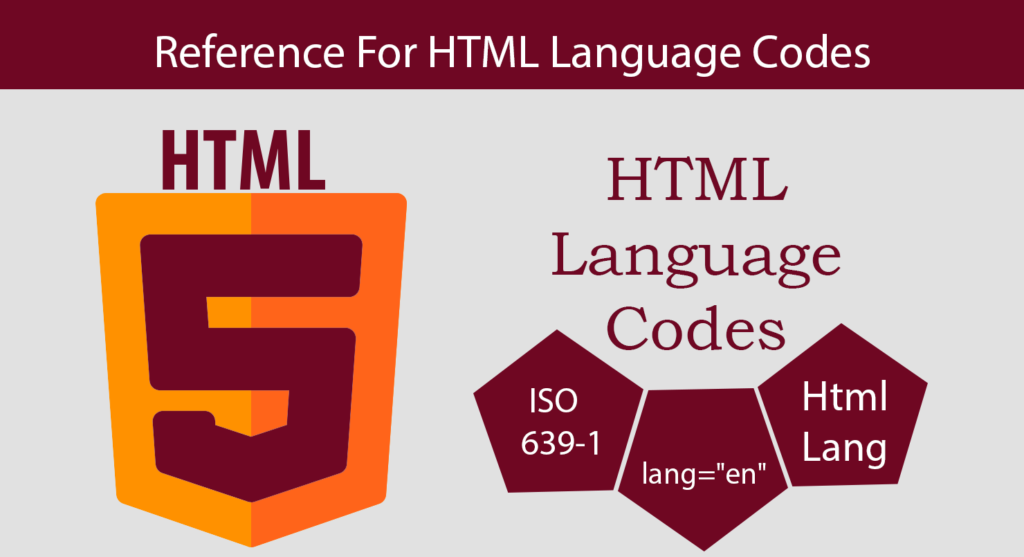Reference For HTML Language Codes

ISO Language Codes
The topic at hand is Ref language codes. Using the lang attribute inside the <html> tag for every web page would be best.
The following information will be helpful to search engines and browsers:
Can find a sample of the Ref language codes here:
Below you can see an example of Ref language codes:
…
</html>
Using XHTML, the language is defined within the <html> tag in the following manner in Ref language codes:
…
</html>
HTML Language Codes Importance
HTML language codes are important because they allow web developers to specify the language of the content on a web page. Here are some of the reasons why HTML language codes are important:
- Accessibility: HTML language codes are essential for making web content accessible to users who speak different languages. By specifying the language of the content, web developers can ensure that screen readers and other assistive technologies can accurately read and interpret the content.
- SEO: Search engines use the language of the content to determine the relevance of a web page to a particular search query. By using HTML language codes, web developers can improve the search engine optimization (SEO) of their pages, making them more visible and accessible to users.
- Internationalization: HTML language codes are an essential component of internationalization efforts. By specifying the language of the content, web developers can create web pages that are tailored to specific regions and cultures, improving user engagement and satisfaction.
- Multilingual support: HTML language codes allow web developers to create web pages that support multiple languages. This is important for websites that cater to a global audience and want to provide content in different languages.
- Semantic markup: HTML language codes are a form of semantic markup, which helps search engines and other systems to better understand the content of a web page. This can improve the accuracy of search results and enhance the user experience.
Language codes – ISO 639-1
Regarding the Ref language codes, ISO 639-1 defines the following abbreviations for languages:
You can also discover References for Country Codes.
| Language | ISO Code |
|---|---|
| Abkhazian | ab |
| Afar | aa |
| Afrikaans | af |
| Akan | ak |
| Albanian | sq |
| Amharic | am |
| Arabic | ar |
| Aragonese | an |
| Armenian | hy |
| Assamese | as |
| Avaric | av |
| Avestan | ae |
| Aymara | ay |
| Azerbaijani | az |
| Bambara | bm |
| Bashkir | ba |
| Basque | eu |
| Belarusian | be |
| Bengali (Bangla) | bn |
| Bihari | bh |
| Bislama | bi |
| Bosnian | bs |
| Breton | br |
| Bulgarian | bg |
| Burmese | my |
| Catalan | ca |
| Chamorro | ch |
| Chechen | ce |
| Chichewa, Chewa, Nyanja | ny |
| Chinese | zh |
| Chinese (Simplified) | zh-Hans |
| Chinese (Traditional) | zh-Hant |
| Chuvash | cv |
| Cornish | kw |
| Corsican | co |
| Cree | cr |
| Croatian | hr |
| Czech | cs |
| Danish | da |
| Divehi, Dhivehi, Maldivian | dv |
| Dutch | nl |
| Dzongkha | dz |
| English | en |
| Esperanto | eo |
| Estonian | et |
| Ewe | ee |
| Faroese | fo |
| Fijian | fj |
| Finnish | fi |
| French | fr |
| Fula, Fulah, Pulaar, Pular | ff |
| Galician | gl |
| Gaelic (Scottish) | gd |
| Gaelic (Manx) | gv |
| Georgian | ka |
| German | de |
| Greek | el |
| Greenlandic | kl |
| Guarani | gn |
| Gujarati | gu |
| Haitian Creole | ht |
| Hausa | ha |
| Hebrew | he |
| Herero | hz |
| Hindi | hi |
| Hiri Motu | ho |
| Hungarian | hu |
| Icelandic | is |
| Ido | io |
| Igbo | ig |
| Indonesian | id, in |
| Interlingua | ia |
| Interlingue | ie |
| Inuktitut | iu |
| Inupiak | ik |
| Irish | ga |
| Italian | it |
| Japanese | ja |
| Javanese | jv |
| Kalaallisut, Greenlandic | kl |
| Kannada | kn |
| Kanuri | kr |
| Kashmiri | ks |
| Kazakh | kk |
| Khmer | km |
| Kikuyu | ki |
| Kinyarwanda (Rwanda) | rw |
| Kirundi | rn |
| Kyrgyz | ky |
| Komi | kv |
| Kongo | kg |
| Korean | ko |
| Kurdish | ku |
| Kwanyama | kj |
| Lao | lo |
| Latin | la |
| Latvian (Lettish) | lv |
| Limburgish ( Limburger) | li |
| Lingala | ln |
| Lithuanian | lt |
| Luga-Katanga | lu |
| Luganda, Ganda | lg |
| Luxembourgish | lb |
| Manx | gv |
| Macedonian | mk |
| Malagasy | mg |
| Malay | ms |
| Malayalam | ml |
| Maltese | mt |
| Maori | mi |
| Marathi | mr |
| Marshallese | mh |
| Moldavian | mo |
| Mongolian | mn |
| Nauru | na |
| Navajo | nv |
| Ndonga | ng |
| Northern Ndebele | nd |
| Nepali | ne |
| Norwegian | no |
| Norwegian bokmål | nb |
| Norwegian nynorsk | nn |
| Nuosu | ii |
| Occitan | oc |
| Ojibwe | oj |
| Old Church Slavonic, Old Bulgarian | cu |
| Oriya | or |
| Oromo (Afaan Oromo) | om |
| Ossetian | os |
| PÄli | pi |
| Pashto, Pushto | ps |
| Persian (Farsi) | fa |
| Polish | pl |
| Portuguese | pt |
| Punjabi (Eastern) | pa |
| Quechua | qu |
| Romansh | rm |
| Romanian | ro |
| Russian | ru |
| Sami | se |
| Samoan | sm |
| Sango | sg |
| Sanskrit | sa |
| Serbian | sr |
| Serbo-Croatian | sh |
| Sesotho | st |
| Setswana | tn |
| Shona | sn |
| Sichuan Yi | ii |
| Sindhi | sd |
| Sinhalese | si |
| Siswati | ss |
| Slovak | sk |
| Slovenian | sl |
| Somali | so |
| Southern Ndebele | nr |
| Spanish | es |
| Sundanese | su |
| Swahili (Kiswahili) | sw |
| Swati | ss |
| Swedish | sv |
| Tagalog | tl |
| Tahitian | ty |
| Tajik | tg |
| Tamil | ta |
| Tatar | tt |
| Telugu | te |
| Thai | th |
| Tibetan | bo |
| Tigrinya | ti |
| Tonga | to |
| Tsonga | ts |
| Turkish | tr |
| Turkmen | tk |
| Twi | tw |
| Uyghur | ug |
| Ukrainian | uk |
| Urdu | ur |
| Uzbek | uz |
| Venda | ve |
| Vietnamese | vi |
| Volapük | vo |
| Wallon | wa |
| Welsh | cy |
| Wolof | wo |
| Western Frisian | fy |
| Xhosa | xh |
| Yiddish | yi, ji |
| Yoruba | yo |
| Zhuang, Chuang | za |
| Zulu | zu |
ISO Language Codes Advantages
SO language codes are a standardized system for identifying and representing languages in computer systems and applications. Here are some of the advantages of using ISO language codes:
- Consistency and accuracy: ISO language codes provide a consistent and accurate way to identify and represent languages across different computer systems and applications. This helps to avoid errors and inconsistencies in language identification.
- Compatibility: ISO language codes are widely recognized and supported, making them compatible with a broad range of computer systems and applications. This ensures that language data can be exchanged and shared between different systems and applications.
- Multilingual support: ISO language codes cover a wide range of languages, making them suitable for multilingual applications and websites. This allows web developers to create content that can be accessed and understood by users from different linguistic backgrounds.
- Accessibility: ISO language codes can improve accessibility for users who speak languages that are not widely used or recognized. By using a standardized system, web developers can ensure that their content is accessible to all users, regardless of the language they speak.
- Localization and internationalization: ISO language codes are an essential component of localization and internationalization efforts. They allow web developers to create websites and applications that are tailored to specific languages and cultures, improving user engagement and satisfaction.
